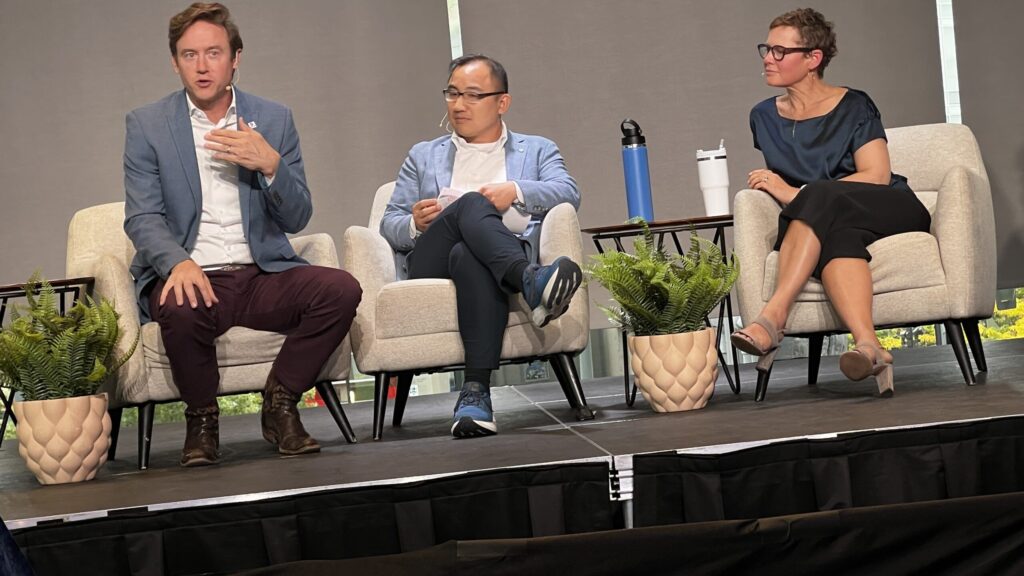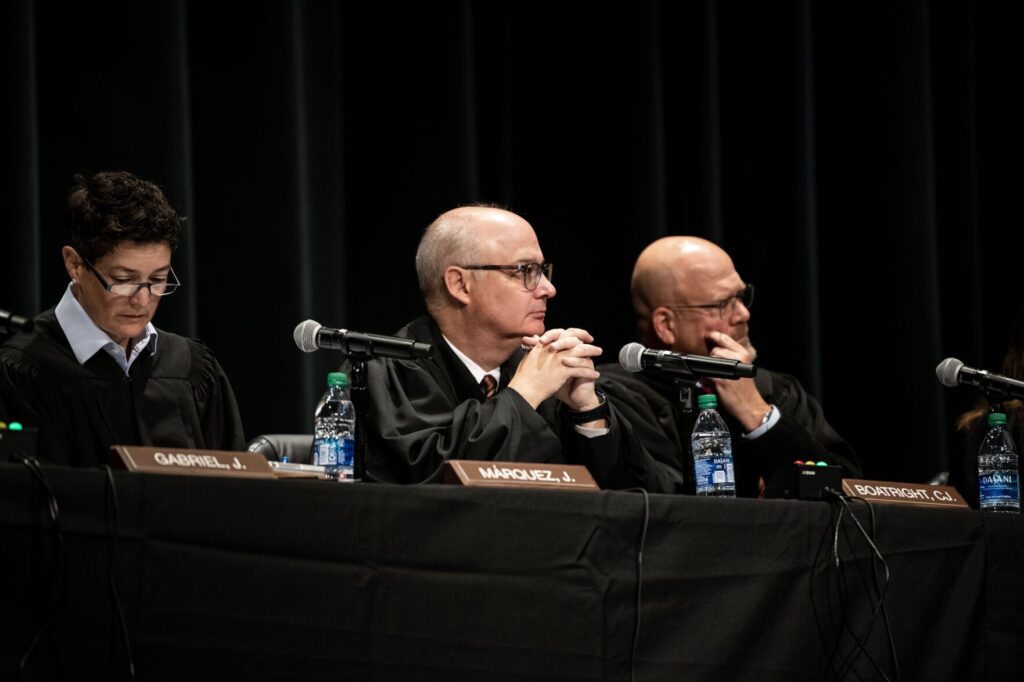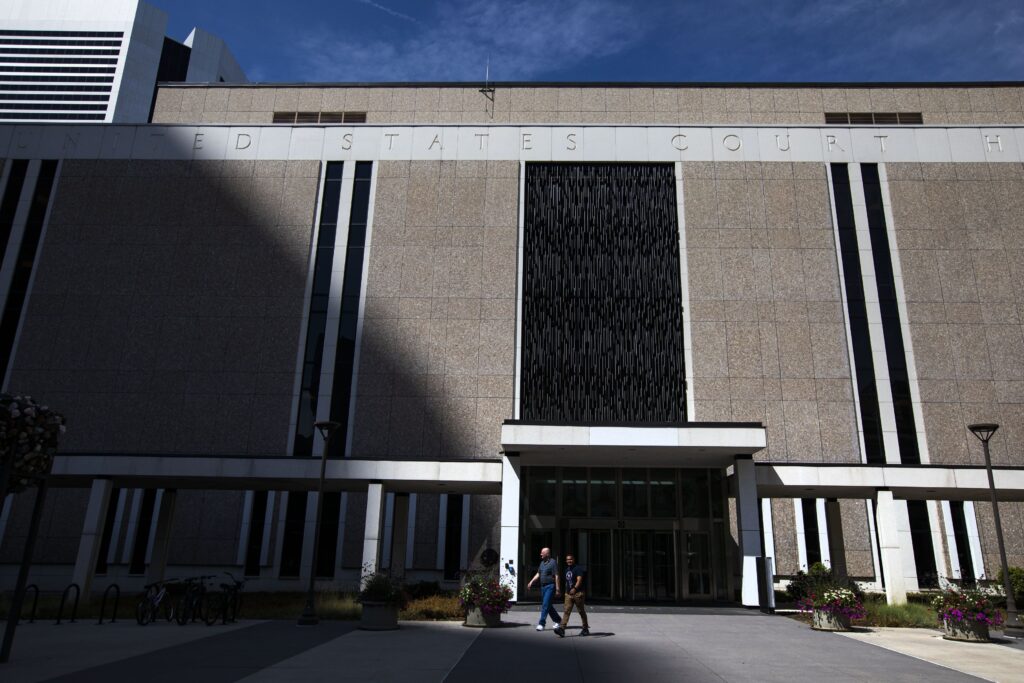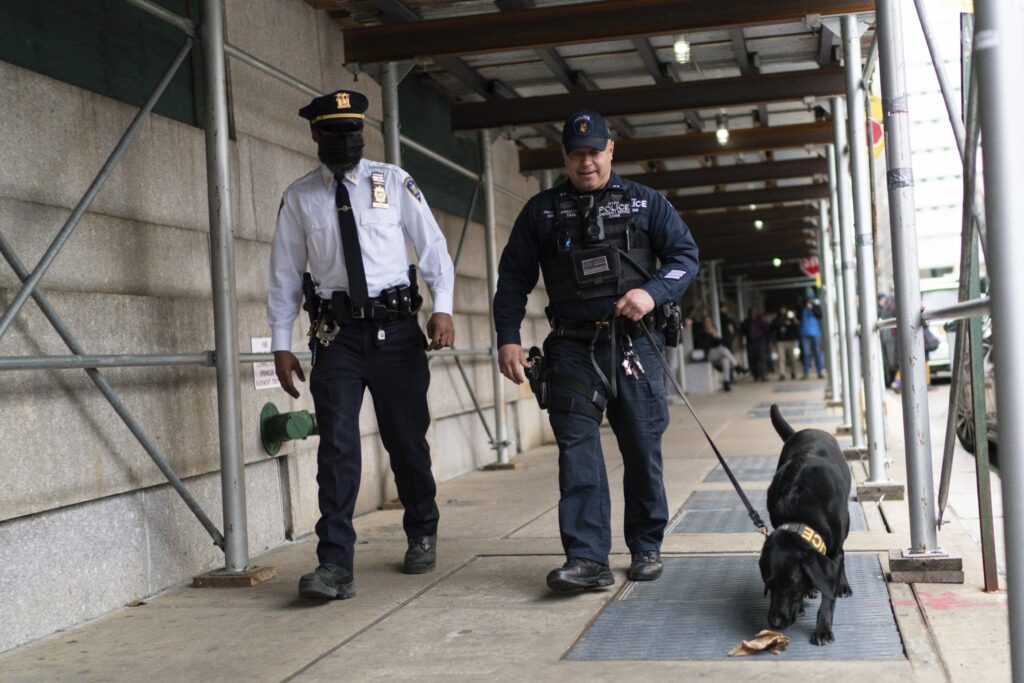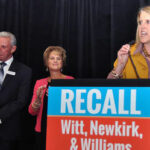Denver voters OK National Western, DIA ballot measures

Denver voters on Tuesday approved ballot measures to open Denver International Airport up for commercial development and make improvements to the National Western Center and surrounding neighborhoods but shot down a proposal to increase the city’s sales tax to help residents pay for college.
It was a big night for Denver Mayor Michael Hancock, who campaigned vigorously for all three measures but had staked his legacy on the two that passed.
Voters in Denver and Adams County overwhelmingly approved companion measures to lift restrictions on certain kinds of development around DIA, with 78 percent support in Denver and 84 percent in Adams County, according to final, unofficial vote tallies. The ballot questions, both dubbed 1A, help clear the way for a so-called aerotropolis, envisioned as a bustling hive of commerce on the vast plains surrounding DIA.
“Tonight with this vote, we ensure that our international airport will continue to be a catalytic force for Colorado,” said Hancock at the National Western Center Tuesday night at an election night watch event that quickly turned into a celebration. “With this vote tonight, the people of both counties decided to show the world that the Denver metro area is a serious competitor in the international market place. Nothing can stop us when we work together.”
“Tonight’s a big night for what we envision could be great for Denver,” he said “And I’m just grateful that the people of Denver agreed with it.”
With the approval of 1A, restrictions written into the 1988 airport charter on commercial activity not directly related to airport operations and aviation are lifted. The airport can now launch a pilot project and bring businesses onto 1,500 acres of airport land, delivering an estimate 12,000 new jobs.
While the agreement requires Denver to pay $10 million to Adams County, it imposes no new taxes in either county. The two counties will split tax revenue from the new businesses on airport grounds. Estimates place revenue between $150 million and $270 million over 30 years.
“Thirty years ago, the folks of Denver and Adams County, side by side, worked together to create a new airport. Today we take the next bold step together,” Hancock said.
Joining Hancock to celebrate were DIA CEO Kim Day and Adams County Commissioners Erik Hansen and Steve O’Dorisio.
“We want to thank you for uniting with us to create an opportunity for all people within our counties,” Hancock told the Adams County officials.
“This truly was an effort of collaboration,” O’Dorisio said. “Everyone came together knowing that we are better together than when we are apart.”
Day called the vote a paradigm shift for the airport, officially opening it up for development.
“We will get businesses to come on-airport,” she said. “We will create revenue that we can use to keep the cost to our airline carriers low. That will incent them to add more flights, and we will grow, not just as an airport, but we will grow as a region.”
The campaign to support measure 1A raised $286,500, according to campaign finance reports. The Denver Metro Chamber of Commerce, United Airlines and the Denver Fire Fighters Local 858 PAC were among the major donors.
Stock Show project wins voter approval
Ballot measure 2C, to overhaul the National Western Complex, along with funding improvements to surrounding neighborhoods and other construction, passed with 65 percent of the vote.
“With this vote, the voters of Denver said yes to upgrading our neighborhoods,” Hancock said. “With this vote, the voters of Denver said yes to new parks and open space. With this vote, the voters of Denver said yes to agriculture innovation and agribusiness that will be spurred here on this site. And, last but not least, with this vote, the voters of Denver said, ‘We love our stock show.’”
The measure authorizes up to $476 million in city borrowing to be repaid by proceeds from the permanent extension of a 1.75-percent tax on car rentals and lodging. It also authorizes $105 million in borrowing for upgrades and an expansion at the Colorado Convention Center. The whole set of projects could cost as much as $1 billion.
The funding will be used to improve the National Western Center, making a permanent home for the National Western Stock show and provide a year-round event center; provide area for Colorado State University to build agriculture-related academic buildings; clean up and revitalize about a mile of the South Platte River; improve access to park and open space land in the area; create additional connection between the Globeville, Elyria and Swansea neighborhoods; and improve public transportation and create art and cultural facilities in the area.
Councilman Albus Brooks, who represents District 9 — including the National Western Center and surrounding neighborhoods — helped lead the effort to get 2C approved.
“Today we brought the Nation Western Center to life,” he said. “We created a new future for this complex laying the foundation for an even stronger economy for our children and grandchildren. And today the people of Denver voted to reinvest into the community that built this city.”
Majority Leader Crisanta Duran, D-Denver, whose district includes the neighborhoods, was also celebrating Tuesday night. She led the legislative effort to spend $250 million toward CSU’s plans to establish an academic center on the National Western Center campus.
“It’s a very, very good start to see so much support for the initiative throughout the city of Denver,” Duran told The Colorado Statesman after the first couple rounds of vote totals had been released but before final numbers were posted.
“Looking at this project, there was something for everybody,” she said. “The educational facility that will be done by Colorado State University, preserving Colorado’s western heritage, continuing to clean up the Platte River, which a lot of folks in Denver care about.”
Supporters of 2C raised $1,588,535.34 for the campaign, including donations from the Western Stock Show Association, Wagner Equipment, Christian Anschutz and Barth Whitman.
Neither campaign faced organized opposition.
College proposal falls short
While city leadership gained wide support for the DIA and National Western proposals, a third proposal, to raise city sales tax in order to fund college scholarships met resistance and failed by 4 points, with 52 percent support from Denver voters.
“The voters have made a decision that this was not the right answer, but we know that higher education institutions, the private sector, philanthropic groups like the scholarship groups, are going to have to come together and figure out some solution,” said Metro State University President Stephen Jordan, a supporter of 2A, on Tuesday night. “Because we cannot sustain these constant reductions on the state side and these continuous increases on the tuition side and expect young people are going to be able to afford it.”
The proposed sales tax would have amounted to 8 cents on a $100 purchase, raising an estimated $10.6 million a year for scholarships and support services through existing programs and some direct grants for loan repayments for qualifying city residents.
Jordan said he thought the measure failed because voters didn’t fully understand it. It’s too early to consider returning the measure to the ballot in future years, he said, but the option was on the table. He added that he had reason to be optimistic, since it took three tries before voters approved the Denver Preschool Program, a model for the college proposal.
The campaign in support of 2A raised $649,645, according to reports. Major donors included Michael Bloomberg and the Denver Scholarship Foundation.
Councilwoman Mary Beth Susman was vocal in her opposition to the measure throughout the campaign, arguing that the city already has enough obligations without taking on the responsibility of funding higher education, which should be handled by the state.
“If we start taking over state funding responsibilities, it’s a slippery slope,” she told The Statesman on Wednesday.
Susman said she wasn’t surprised the ballot measure failed.
“I think our voters are pretty savvy about the delegation of authority,” she said.
“The voters of Denver understand the spiraling cost of higher education, and they are interested in a solution,” said Councilman Kevin Flynn, who also opposed the measure. “But they simply didn’t believe that the proper way to do that was through our city sales tax.”
At the election night watch party, Hancock sounded undaunted.
“We heard voters loud and clear tonight. I encourage our business, civic, education and philanthropic communities to stay involved, and I, too, will remain an undeterred advocate on this critical issue,” he said. “Unless we take action, the cost of post-secondary education will continue to skyrocket beyond the reach of so many students. We need to continue searching for solutions so that deserving students get a fair shot.”
Like the rest of the state, Denver voters approved the statewide ballot measure BB by a wide margin, with 75 percent support. (Statewide, the measure won with 69 percent of voters in favor of the measure.) The measure allows the state to keep tax dollars from marijuana sales, again. It was necessary because fiscal analysis underestimated how much revenue the state would collect without the new tax in the fiscal year ending June 30, 2015. The projection is required in the tax’s first year by the Taxpayer Bill of Rights, and the mistake mandated a refund unless lawmakers won voter approval to spend it.
Hancock reminded the crowd that winning the support of voters was just the first step for the DIA and National Western projects.
“Tonight, the real work begins,” he said.






